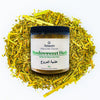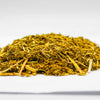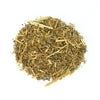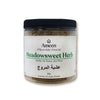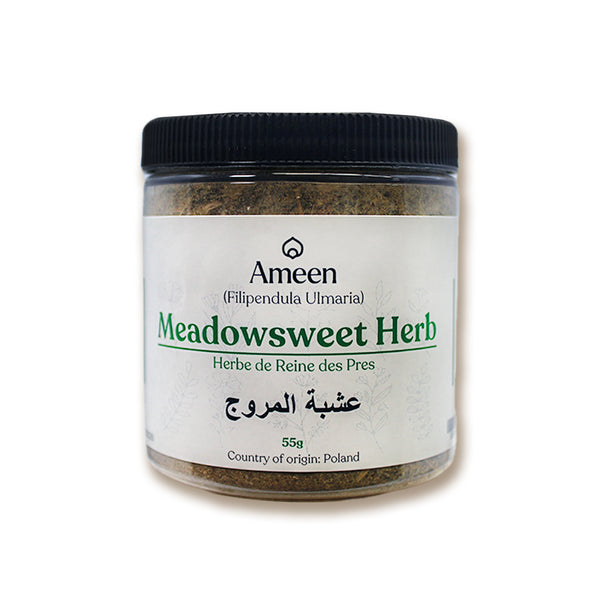Meadowsweet, scientifically known as Filipendula ulmaria, is a cherished herb with a rich history rooted in traditional medicine and culinary practices. This perennial plant, renowned for its sweet, almond-like aroma, offers dried leaves and flowers that have been utilized for centuries in a variety of applications. Its historical use as a floor strewing herb and as a flavor enhancer for mead underscores its versatility and enduring appeal.
A Delightful Culinary Companion
The dried flowers and leaves of Meadowsweet exude a delicate, slightly astringent flavor reminiscent of mild honey. This subtle sweetness makes it a sought-after ingredient in:
- Herbal Infusions and Teas: Adds a soothing, honeyed essence to create comforting blends.
- Beverages: Enhances the flavor of cordials, meads, and homemade wines with its unique fragrance.
Whether brewed into a warm tea or infused into a refreshing summer beverage, Meadowsweet elevates drinks with its gentle and aromatic profile.
A Pillar of Traditional Herbal Medicine
Beyond its culinary charm, Meadowsweet holds a prominent place in traditional European herbal medicine. Known for its potential soothing properties, the herb has been used for centuries as a natural remedy. When steeped in hot water, dried meadowsweet creates a restorative infusion that is both comforting and gentle, making it a staple in wellness routines.
Botanical and Cultural Identity
- Botanical Name: Filipendula ulmaria
- Common Names: Meadowsweet, Dropwort, Mead Wort, Queen of the Meadow, Bridewort, Meadow Queen, Lady of the Meadow, Dollof, Meadsweet, Filipendula

